The Melancholy of Haruhi Suzumiya: The Journey of The Hero
We are all familiar with the big-screen portrayal of the hero; that rugged, resourceful alpha-male who battles against overwhelming odds and wins the day, but heroes can equally be found in the unlikeliest of characters; even within that of an underachieving high school student.
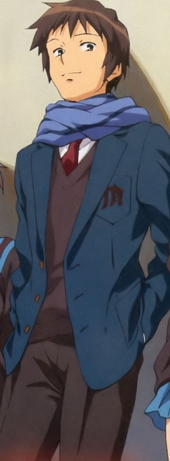
In the highly successful anime comedy/drama series, The Melancholy of Haruhi Suzumiya and the follow-up feature film The Disappearance of Haruhi Suzumiya, the unlikely hero is both the protagonist and unreliable narrator: Kyon, a freshman student at North High school. Through his colourful recollections we follow the bizarre adventures of a maverick after-school club, The SOS Brigade, in its search for paranormal phenomena. Unique and wildly entertaining, the show quickly established a loyal fan base, but hidden within the apparently simplistic storylines is a deeper vein of literary allusion and an exploration of archetypal images and themes, including that of The Journey of The Hero; as played out through Kyon’s school life.
The concept of archetypes dates back to Plato, who suggested they were ‘ideas’ 1 imprinted onto the soul before birth – what the psychoanalyst Carl Jung would, many centuries later, come to define as the Collective Unconscious 2. Influenced in part by Jung, the mythologist Joseph Campbell identified seventeen stages to the hero’s journey 3, noting that whilst some heroic tales concentrate on just a few of these, others address them in a different order. Nevertheless it is possible to summarise the hero’s journey in three stages or acts:
1. The Call to Adventure: which covers the catalyst that disrupts the future hero’s day-to-day life, his initial refusal or reluctance to heed the call, his training by a Mentor and the tests or trials he must pass.
2. The Quest: which details the hero’s challenges and supernatural aid, his transformative experience and atonement, and the acquisition of his prize.
3. The Return: which deals with the homeward journey of the now enlightened hero, replete with deeper knowledge, experience and new found wisdom.
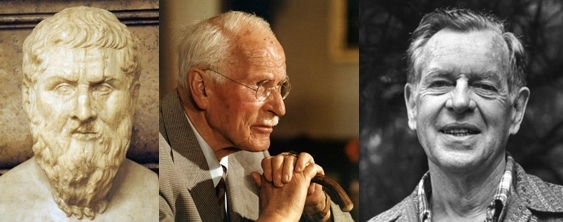
So, how does Kyon’s school life conform to this heroic road map? Well, when we first meet him he is hardly what would be considered ‘Hero material’. Coming from an average family, this moderately intelligent, but lazy boy developed an early obsession with TV shows about Aliens, Time Travellers and Espers (those with E.S.P. abilities). After he graduated from middle school Kyon eventually concluded such exotic characters couldn’t possibly exist and yet even as he enters his freshman year at North High, he admits “…but a little part of me wishes that they did”. He openly states a desire for a normal school life, but concedes that “…reality is a hard road indeed”, equating his daily uphill walk to North High with Sisyphus 4 pushing the boulder up the mountain!
From these observations we can see that Kyon is a dreamer and he’s prone to hyperbole, while his desire for normalcy sounds suspiciously like he’s trying to convince himself that he’s outgrown his childhood fantasies. He also lacks motivation, believing there’s always tomorrow and homework can be left until the very last moment. However, Fate intervenes when Kyon meets the egotistical whirlwind and unaware Goddess, Haruhi Suzumiya and unwittingly gives her the idea to start her own after-school club. In doing so, Kyon takes his first unconscious step onto the hero’s path.
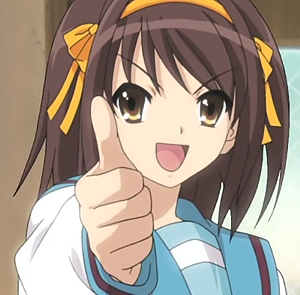
Haruhi represents two important aspects of Kyon’s journey. Firstly, she is an embodiment of the catalyst that shakes up his world as she, quite literally, drags him out of his comfort zone, and secondly, the disappeared Haruhi represents the prize that Kyon the Hero seeks. As Haruhi The Goddess, she also symbolises the Sun in Kyon’s world (she previously attended East Junior High, i.e. Kyon’s ‘Sun’ rose in the East). In a later manga story another character even describes Haruhi as being “…like the Sun…If you stare at the Sun too long, you’ll hurt your eyes, but if the Sun disappears, we lose the warmth of its light” 5. Therefore, it’s significant that Kyon’s quest for the disappeared Haruhi begins in mid-winter when the Sun is at its weakest, as is Haruhi after temporarily losing her powers. So it can be argued that Kyon’s quest is to symbolically retrieve the Sun (his prize) and return the Goddess to her rightful place in his world.
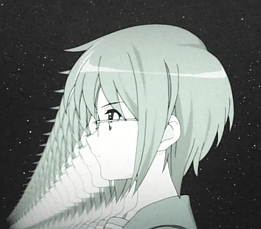
Similarly The Mentor can appear in a variety of guises, such as the three ‘not-normal’ students recruited into the SOS Brigade by Haruhi. Whilst they hide their true identities from Haruhi, each opens up to Kyon who suddenly finds he’s in the company of those he had previously fantasised about: an alien, a time traveller and an esper. The three are ostensibly there to prevent the young goddess from discovering the truth about herself, but they are also clearly interested in Kyon as much as they are Haruhi. The taciturn female Alien, Yuki Nagato regards him as an “…irregular factor” and “…the key to Haruhi Suzumiya”, the sweet and warm hearted Time Traveller, Mikuru Asahina refers to Kyon as “…chosen…”, a term often applied to the hero, implying predestination, and the cool, self-reliant male Esper, Itsuki Koizumi tells him outright “…the biggest mystery would be you”. In keeping with the Call to Adventure stage, Kyon is initially reluctant to believe the not-normals without proof, even going so far as to consider Nagato delusional, because in his childhood fantasies he had only ever cast himself in a supporting role to the hero, but he’s intelligent enough to realise that his new companions are intent on manoeuvring him into a more proactive role.
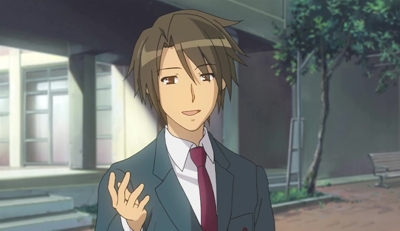
Worth noting too is that Nagato and Asahina (in her adult form) represent Campbell’s Supernatural Aid or Guides during the Quest stage, which will be demonstrated later, with the alien Nagato in particular representing two separate aspects of Kyon’s heroic journey in two different time periods. Those readers already familiar with the tales understand that she can, as an extension of her creator, effectively exist across Space and Time simultaneously.
It’s no coincidence that the SOS Brigade’s club room is the old Literature Club, nor that the sole member of that near defunct club is the bibliophile alien, Yuki Nagato. Her interest in human literature is catholic and it is she who provides the first allusions, which will form the basis for Kyon’s journey. In an early episode Nagato is seen reading Simon Singh’s The Code Book: The Science of Secrecy from Ancient Egypt to Quantum Cryptography 6, which features a series of keys as part of its cover design – a clear allusion to the ‘keys’ challenge awaiting Kyon in the forthcoming Quest stage. She loans Kyon a copy of Dan Simmons’ Hyperion 7, a futuristic Canterbury Tales in which intergalactic travellers on a pilgrimage to seek a favour from a powerful entity share their interlocking tales. Kyon too is on a course that will see him seeking a favour from a powerful entity, challenge another and require him to atone for previous errors, whilst his new companions do indeed share some extraordinary stories and insights with him.
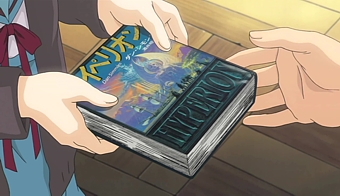
So, with his mentors in place, Kyon’s training begins. Koizumi attempts to stimulate his intellect through philosophical discussions and strategy based board games. Asahina uses her sweet girlish charm to evoke Kyon’s noble qualities, whilst Nagato deals succinctly with his technical queries. Meanwhile, Brigade Leader Haruhi constantly harangues Kyon for his shortcomings and treats him like her walking wallet and personal errand boy.
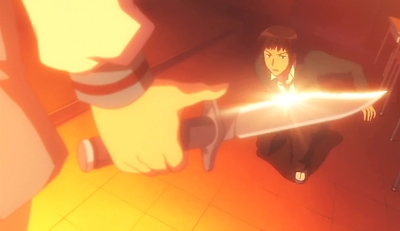
‘Here there be Monsters’ say the legends of old and before Kyon has even had time to accommodate the sudden changes in his life, he experiences his first disconcerting taste of the trials ahead. He barely survives an assassination attempt by a radical faction within the alien’s parent entity. The assassin, Ryouko Asakura, is defeated by Nagato, but as Asakura’s data link dissipates she hints at darker events to come. Koizumi introduces Kyon to Closed Space, a dome like dimension where Haruhi unconsciously vents her frustrations in the form of destructive, translucent blue giants: the Shin-jin. There, Kyon witnesses Koizumi transform into a ball of glowing energy in order to vanquish the giants and so prevent them from threatening the real world. Furthermore, a search for a missing student opens another unearthly dimension where Koizumi and Nagato battle a monstrous data life form. Kyon questions why these disturbing events keep happening around him. “I hate to say it, but it’s your fault” Koizumi says, blaming him for giving Haruhi the idea to create the SOS Brigade, thus awakening the sleeping Goddess. “…if we don’t do something about this, the world doesn’t stand a chance at all”.
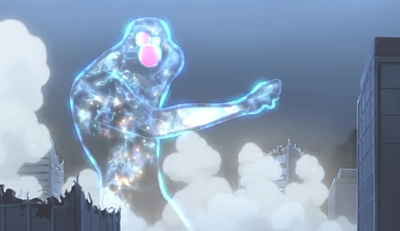
Campbell describes the hero’s early experiences as being akin to crossing a threshold into an otherworldly realm, so whilst these trials serve as Kyon’s proof that his paranormal companions are the genuine article, they also mark the beginning of a gradual shift in his mindset, from the passive to the active. So when Kyon awakens one night to find himself inside an eerie new dimension, alongside a resentful Haruhi unconsciously bent on recreating the world, he takes his first proactive step. As the Shin-jin lay waste to North High, Kyon gambles everything on a hunch and kisses her. Although Kyon is superficially attracted to Haruhi, this kiss is actually a ploy to distract her and save the world. Fortunately it works and the nightmare realm dissolves. From his mentors’ point of view, Kyon has endured his toughest trial to date, but our young hero’s life is about to become complicated in ways he could never imagine.
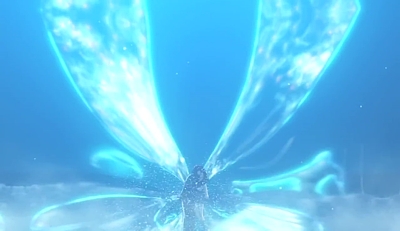
Briefly mentioned earlier is Predestination, a frequently used theme in heroic storytelling, the implication being that the hero is already destined to do what he must do, and on the night of Tanabata (7th July Star Festival) 8 Kyon accompanies Asahina on a trip, three years into the past. There, an adult version of Asahina directs him to help a twelve year old Haruhi create her notorious ‘I am here’ message to aliens, on the East Junior High school grounds. Although he wisely picks the pseudonym ‘John Smith’ when the girl asks his name, from that moment onward their futures are inextricably linked. Similarly, he meets an earlier version of Nagato that same night and unknowingly sews the seed for a tragedy for which he will, one day, have to atone.
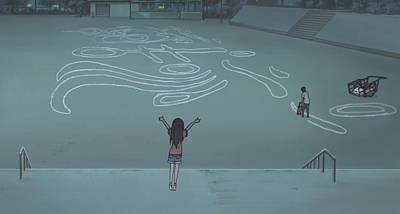
The one consistency with Kyon throughout this stage is his constant bemoaning of his lot. He considers himself to be a “…normal guy…dragged into troublesome situations against his wishes…” and views Haruhi as annoying, unreasonable, an idiot and the cause of all his woes. Of course it could be asked, why doesn’t he just quit the brigade and return to his ordinary life? He won’t because deep down inside, Kyon secretly enjoys the situations the brigade encounters, although he is unwilling to admit that, even to himself, as he is also loathe to admit his attraction to Haruhi may be more than skin deep. This reluctance to be honest with himself is a weakness that he will soon be forced to address, as he will also be forced to accept that not everything is about him. While the role of the Hero is indeed central to the Great Story, the most important lesson every hero learns is that to become Campbell’s Master of Two Worlds (the Adept) he must relinquish his ego to something far greater than himself. This is a lesson no mentor can inculcate into the student. It must be realised from within.
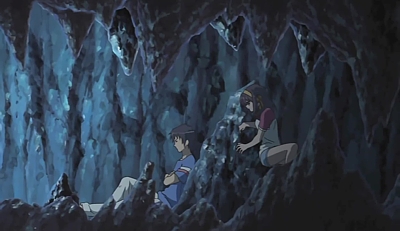
Whilst further trials await Kyon, there is one story in particular worth mentioning for its subtly crafted reference to Plato’s Allegory of the Cave (which in essence states that our perceived reality is an illusion, like shadows flickering on a cave wall) 9. In the episode Remote Island Syndrome Kyon and Haruhi take shelter in a cave during a typhoon and there they expound their theories about a recent murder. Neither theory is wholly correct and it’s only when they leave the cave, i.e. they move into the light of the real world, that Kyon recognises the murder as an illusion. Although the scenario was deliberately engineered by Koizumi’s Esper Organisation to keep Haruhi’s mind occupied with a fake murder mystery to solve, this tale demonstrates Kyon’s growing ability to distinguish between what is real and what is illusory. The hero must be able to see a deception for what it is.
The World turns, seasons change and as the events of The Disappearance of Haruhi Suzumiya get under way, Kyon awakens on a grey, 18th December morning to an altered reality. Ryouko Asakura reappears, sending him into shock, but seeking help is futile. Haruhi and Koizumi are missing. Asahina treats Kyon like an unwelcome stranger, but stranger still, Nagato is now human and appears to have a romantic interest in him. “Just because your eyes are open that doesn’t necessarily mean you’re wide awake”, Asakura casually warns Kyon, “You have to accept the reality that’s right in front of you and that’ll help you to understand everything”. So Asakura is clearly aware of the Alteration, but this dark angel offers no further assistance. From here on, Kyon must think for himself and seek aid wherever possible. He has entered The Quest.
There is no short-cut to Enlightenment and ahead of Kyon lie three major challenges: to solve The Riddle of the Altered World, to endure The Transformative Experience and to retrieve The Sun and Goddess. Only by overcoming these challenges and surmounting the fear of death will he eventually identify the architect of the Alteration, understand why it happened and why he, of all people, was destined to undertake this Quest.
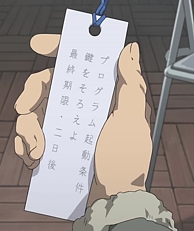
Kyon’s challenges begin with an innocent looking bookmark, on which is written an instruction in Nagato’s handwriting: ‘Programme run condition: collect keys. Deadline: two days’. Since the human Nagato has no idea what this message refers to, Kyon correctly deduces that the alien Nagato left it for him before the World was altered. Furthermore, it’s significant that the English translation of Nagato is ‘Gatekeeper’. The alien Nagato guards the gateway or portal through which Kyon must pass on the road to Enlightenment, but first he must earn the right to use that portal. Again referring to Campbell’s model, these keys would appear to represent the talismans or artefacts, either found by the hero during the Quest or gifted to him by a supernatural agency and intended to aid him on his journey.
Campbell further describes an intermediate stage: Woman as Temptress in which the hero will be tempted to stray from or even abandon his path. Although the term ‘Woman’ is a metaphor for earthly pleasures and material temptations, here it is referenced by the human Nagato’s romantic interest in Kyon. He briefly wonders what life would be like if he accepted the Altered world, but following an awkward dinner with Nagato and a sweetly, passive-aggressive Asakura, who now appears to be a cross between a meddlesome Aunt and a friend to Nagato, Asakura warns Kyon to take Nagato seriously, “…or I’ll never forgive you”. Once again Asakura implies she knows more than she’s prepared to admit, so it is possible to view her as a shadow form of the Supernatural Aid, although her harsh lessons follow the ‘one-size-fits-all’ approach and are invariably delivered at the point of a sharp knife!
Unsettled by this truly confusing domestic scene, Kyon eventually finds his motivation to continue his quest in the simple, honest realisation that, despite their frequent squabbles, he genuinely misses Haruhi. It’s a singular moment of truth from a boy who has always hidden his feelings behind witty banter and sarcasm and, as such, it marks a growth in Kyon’s development, both as the Hero and an individual. Perhaps the Gods of Mythology witnessed this frank admission, for on the afternoon of the final day, he receives a small reward.
A chance remark by a previously absent classmate reveals that Haruhi attends a prestigious academy and, like Orpheus descending into the Underworld 10 in search of his beloved Eurydice, a determined Kyon descends from North High to seek Haruhi. Continuing this literary allusion – whilst he waits outside the Academy gates, symbolically marking the border between the Overworld and the Underworld, Kyon agonizes over which god, prophet or poet he should pray to, “Christ? Buddha? Mohammed? Zoroaster?…Lovecraft?”. Darkly comical as this is, a parallel can be drawn between Orpheus (a poet, prophet and musician) playing divine music to charm Hades and Persephone into releasing Eurydice, and Kyon’s desperate prayer to find Haruhi. Both are heartfelt pleas, both are successful, but equally so, both characters will lose those they seek; Orpheus by his own error and Kyon by necessity.
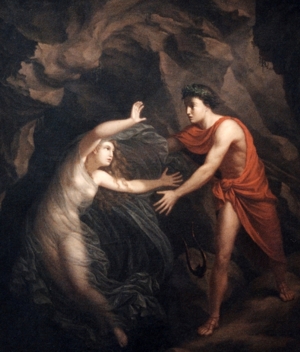
In keeping with the Underworld analogy, when Haruhi appears, with Koizumi in tow, she is as quiet and subdued as the dull tones of her academy uniform. Unfortunately though, this Haruhi doesn’t recognise Kyon and in desperation he calls on her Tanabata memories, using his John Smith alias to prove his identity. A connection is made and yet Haruhi also recalls a second John Smith who, as she was walking home, called out to her from the shadows: “Take care of the John Smith who will shake up the World”. Kyon wonders who the imposter could be.
Finding Haruhi is but one small part of the puzzle and even gathering everyone together in the brigade’s old clubroom doesn’t solve the greater riddle. These students may look and even act somewhat like Kyon’s friends, but the hero must, by necessity, free himself from all illusion and his impetus to move forwards comes from an unexpected source. An old computer mysteriously boots up, displaying a message for Kyon: “YUKI. N> When this message appears, it means that you, me, Suzumiya Haruhi, Asahina Mikuru, and Koizumi Itsuki are all present…That is the key. You have found the answer…”. With Nagato’s keys collected, Kyon has earned the right to access the portal. He is offered a chance to repair the Space-Time continuum. To do so he must press the ‘Enter’ key and activate an Emergency Escape programme. “Ready?”, asks Nagato’s cryptic message.
Of all his mentors, the one Kyon trusts without hesitation is Nagato. However, aid from a supernatural agency doesn’t always gift the hero what he expects, but what he needs. Consequently, pressing the Enter key doesn’t return Kyon to his world, but to the three years ago night of Tanabata. So why this date in particular and what relevance does it have to Kyon’s quest? Firstly, Kyon is predestined to become the second John Smith and so set the younger Haruhi her own quest (to seek and “Take care of … John Smith…”), thus ensuring his ‘Sun’ will rise, and secondly, he is being tasked to prevent a potentially hazardous Causal Loop (a self perpetuating event) that, if permitted to occur, will lead to the altered world coming into existence.

Awaiting Kyon is his guide, the adult Asahina. Kyon is convinced that Haruhi is the creator of the Alteration, but Asahina merely hints at another responsible party, adding that the future can only be reset by Kyon, with Nagato’s help. Accordingly, they arrive at the imposing edifice of the alien’s apartment block, symbolically entering Campbell’s Realm of the Goddess. Kyon must now seek a boon from this ‘Great Goddess’ Nagato, which he does by explaining the involvement of her future self. Nagato, in turn, attempts to synchronise across time with her variant only to have her request for information refused. The scales having fallen from her eyes, she realises who is responsible for the Alteration and transforms her glasses into a small needle gun, informing Kyon that it contains a restoration programme. “Who do I use this on?…Who’s the one responsible for this time plane alteration?” he asks. Nagato’s reply shocks him, for it is the last person he would ever have suspected.
Further boons are given. Asahina receives the Space-Time coordinates of their target and Nagato bestows both Kyon and Asahina with protective shielding against the changes they will encounter upon returning to the present. Whilst Asahina prepares to initiate the time jump, Kyon reflects on Nagato’s unsettling revelation. Now a little wiser and having learned to see his alien mentor in a new light, he begins to comprehend that she too is an evolving being in her own right, just as flawed and just as complicated as he is.
Asahina delivers them into the pre-dawn hours of the 18th December. They watch a small, female student walk slowly up the hill to North High, where she stops and, equally slowly, raises her arm, making a simple waving gesture with her hand. A light wind stirs the trees and clouds ripple across the sky, then all is quiet again. Almost as if the World has just sighed to itself, the Alteration is complete. Kyon approaches the student. She looks confused, as if having just awoken from a long sleep and unsure of her surroundings. The human Nagato has just been born.
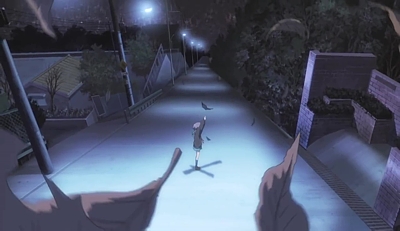
So what reason and motivation would Nagato have for altering the world and what is the relevance of that hand gesture?
Campbell refers to the Apotheosis, a moment of revelation for the hero in which greater understanding is achieved. In Kyon’s journey this is depicted by a surreal cutaway sequence, representing the crux of the matter and reflecting his new perspective on Nagato and himself.
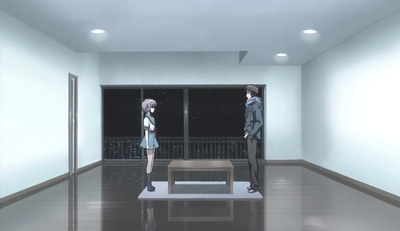
In the Spartan interior of her apartment, the Tanabata Nagato explains that accumulating errors within her programming will give rise to a bug that will eventually trigger her actions, but since she cannot identify the cause, she will be unable to counteract it. The Alteration is therefore inevitable. A now more insightful Kyon identifies the cause. Nagato was not created to experience human emotions, but having grown weary from repeatedly concealing paranormal phenomena from Haruhi, tolerating her erratic behaviour and protecting Kyon had lead Nagato to develop her own emotional responses. Unaccustomed to what humans take for granted, unable even to physically express the feelings that overwhelmed her; the effect had been that much stronger on her.
Kyon realises that he had unintentionally marginalised Nagato, relying far too much on her special abilities to deal with troublesome situations. He had failed to give her the same attention he accorded Haruhi, hence the underlying meaning of Nagato’s hand gesture, for just like the middle school Haruhi’s message to aliens, it represents a simple wish to be noticed, not for what Nagato is, but for who she is: ‘I am here’.
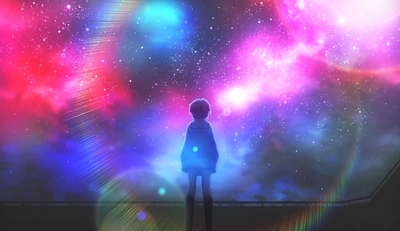
If blame is to be attached to anyone then it must be Kyon. As part of his quest, he had been seeking to identify the Architect of the Alteration. That person, he now understands, is himself, for it was his constant complaints about Haruhi that had motivated Nagato to give the boy she cared for the ordinary life he always said he wanted and she wished for, but her allegiance to Kyon meant that she would defer to his final judgement. The Altered World or The Real World? Which is best? She left the choice to Kyon, but herein lies the problem, for Kyon has already made his decision, even though he’s still loathe to admit his deeper reason for doing so.
A frequently used device in heroic storytelling is the hero being confronted by an alternate version of himself. This might be a stronger or darker version of the hero, one from whom he cannot run or hide and who knows his innermost thoughts. For Kyon this is represented by a ‘Mirror’ Kyon 11 who brings him to account, directly challenging him on his duplicity. “The great Nagato went out of her way to create a stable world for you, but you rejected it. Why?” demands Mirror Kyon.
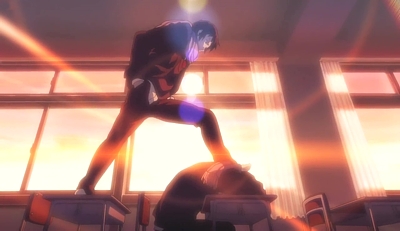
In Kyon’s empty classroom, a clear metaphor for the tough lesson ahead, Mirror Kyon places his foot upon Kyon’s head and drives it down against his desk, forcing him to address the core issue he’s been avoiding so far – the truth behind his choice. “Don’t I find being with Haruhi, and being dragged into Haruhi’s troubles fun? Answer me!”. Pushed to his breaking point, Kyon finally snaps, “Of course it was fun! Don’t ask me…something so obvious!”. He can no longer hide from the truth in his heart – that it’s not only his world he wants back, he misses all the crazy excitement and danger that Haruhi represents; in fact he relishes every second of it. Life without his Haruhi is unthinkable. This long overdue epiphany empowers Kyon to raise his head, overcome his mirror self and move forward into the light.
Now that Kyon has exorcised his inner demons, The Riddle of the Altered World appears solved, but alas for him, his soul searching apotheosis is late in coming. Awaiting Kyon is Campbell’s Abyss, in which the hero must face his ultimate transformative experience. He will symbolically die then rise again.
Perhaps the most well known example of this is the Crucifixion of the Christian messiah, Jesus and, as we will see, Kyon’s fall and rise employs similar archetypal imagery and symbolism.
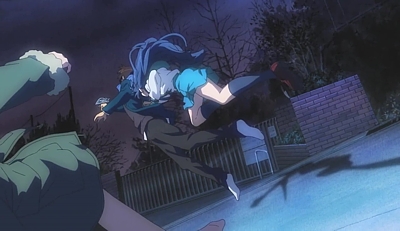
Before the gates of North High, Kyon tries to persuade Nagato to return herself and his world to normal, but this Nagato is an innocent and oblivious to what has just occurred. It takes Kyon’s guide, Asahina to remind him of this fact. With no other option left, Kyon raises the needle gun and targets a terrified Nagato, but in a moment of pure Aristotelian peripeteia, Asakura suddenly appears and, sideswiping Asahina, drives a large hunting knife deep into Kyon’s back. “I can’t allow you to hurt Nagato”. A second thrust of the knife sends Kyon sprawling. From Asakura’s warped perspective, this self-appointed Nemesis of Kyon’s is delivering her own brand of divine retribution, punishing Kyon for threatening Nagato and failing to take the girl’s interest in him seriously. The dying hero can only conclude that this apparently psychotic alien must be an aberrant side-effect of Nagato’s creation and as she looms over him, gleefully preparing to terminate his life, Kyon can do nothing to stop her.
The Aristotelian literary device referenced above is invariably employed to shock the reader or viewer, creating a crisis point at which all seems lost. The Hero’s death is inevitable and yet this catastrophe will be overturned by what J.R.R. Tolkien termed the Eucatastrophe: a sudden twist of events in the protagonist’s favour. In Kyon’s case that upturn in his fortune is represented by Nagato’s small hand that suddenly blocks Asakura’s descending blade, but which Nagato?
As familiar faces fill Kyon’s blurred vision, Asakura is dragged away. The adult Asahina apologizes profusely for her foreknowledge of this event, while her teenage self weeps over his fallen body, causing a confused Kyon to think he’s hallucinating, and a young male voice tells him, “Sorry,…I had a good reason to hold back. Don’t worry…it hurt for me, too. We’ll deal with it from here on. You just sleep”. Kyon surrenders himself to the darkness and the last word on his lips before passing out is “Na…ga…to”.
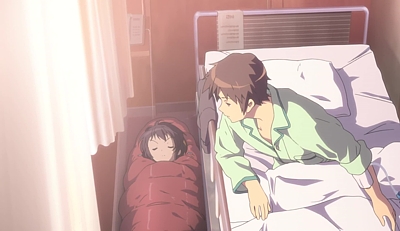
Awakening in a hospital bed, bathed in the late afternoon Sun, Kyon returns to the land of the living, learning from Koizumi that he’s been in a coma for three days. However, Koizumi states that Kyon was pushed downstairs at school by an unknown assailant, indicating that memories may have been altered yet again, although Kyon is only aware of his journey, but wisely keeps that information to himself as his body is surprisingly undamaged. Next to his bed, cocooned in a sleeping bag, is his Goddess, Haruhi. “She’s never left your side”, Koizumi tells him. Our hero, having at last attained his Prize, regards her fondly, even stroking her hair gently as she sleeps. With his Haruhi back in the world, Kyon’s Quest stage is complete. He is visited by friends and family, but the one who doesn’t appear is Nagato. Kyon understands why. She is waiting to speak to him alone.
So, let’s compare the Crucifixion of Jesus with Kyon’s transformative experience. Jesus was crucified on a hill outside the city walls. Kyon was stabbed with a hunting knife (Cruciform) on the hill outside the gates of North High. Jesus died then resurrected three days later. Kyon symbolically died (fell into a coma) then resurrected (awoke) three days later. Jesus ascended into Heaven in a blaze of glory and rejoined his father, the Christian God. Kyon was bathed in sunlight (a blaze of glory) and rejoined his Goddess, Haruhi.
Furthermore, Jesus was said to have died at the ninth hour. Kyon was stabbed on the 18th (1+8=9) at 04.23 hours (0+4+2+3 = 9). Adding the two 9s together: 9+9=18 and 18 once again gives us 1+8=9. The relevance of the Number 9 to heroic storytelling is that it represents energy, heroic activity, the fighter and the expression of courage, with its negative connotation representing strife, foolhardiness, accidents and violence. All of these elements can be found within Kyon’s journey 12.
So, there are definite similarities in the two heroes’ transformative experiences, but there are also obvious differences. Jesus retained the Stigmata whereas Kyon was miraculously healed and was spared the Spear (Asakura’s intended terminal strike) that ended Jesus’ mortal life. Nevertheless, Kyon is not being deliberately equated with Jesus, but rather both accounts share a common theme – that of the atonement of a sacrificial hero; one who will rise again in accordance with the Solar cycle.
Now let’s take a brief look at the dichotomy of Nagato and Ryouko Asakura. The human Nagato is innocence personified, Asakura is occult knowledge. Nagato is the light to Asakura’s dark, but Asakura is not necessarily evil. Whilst she represents the final confrontation, often given form in a mighty Dragon, an Ogre or similar in classic heroic tales (‘Ryouko’ has been translated by some fans as ‘Dragon’), here she also represents the terrible face of Campbell’s ‘Father’ figure; the God or Superego. According to Campbell the hero must endure his crisis and in doing so comes to understand that the Mother and Father figures reflect each other, in essence they are the same, like two sides of a coin. The alien Nagato is the Mother Creator of the Altered world and in a later story Asakura describes their relationship as being “…like opposite sides of a mirror” 13 Therefore, Asakura’s role in Kyon’s symbolic death is a vital one, perhaps even predestined, hence the earlier reference to her as a Dark Angel, for as is the case in the later stories, apparently angelic characters can appear unhelpful, unforgiving or act harshly, depending on what is required of them.
Kyon has now entered The Return stage of his journey and, having had time to reflect on the events of the past few days, he knows the male voice telling him to sleep was his own, indicating that he will revisit the night of the Alteration, with the teenage Asahina and Nagato, to ensure the world is reset and the Goddess restored to her rightful place. Furthermore he understands why the adult Asahina couldn’t prevent his near fatal stabbing, even if she wanted to, for just like his two visits to the three years ago night of Tanabata, this event too was predestined. The hero will always be the servant of Fate and Fortune and by accepting this fact, Kyon has surrendered his ego to something far greater than himself. This last time jump will be his final challenge and although its conclusion is foregone, it will be a step taken willingly and in full knowledge of its purpose – to complete his mission, fulfil his obligations and complete his atonement.

Alone once more, Kyon awaits the last piece of the puzzle to fall into place and when she appears, Nagato openly admits her culpability. Our newly enlightened hero, in turn, offers her a deep and sincere apology for his previous errors. The Architect of the Alteration and its Creator arrive at a new understanding, from which a deeper friendship will grow, so when Nagato discloses that her creator is debating her continued existence, Kyon immediately jumps to her defence, exploding in righteous indignation and declaring that if Nagato disappears “We will get you back, even if we have to recreate the universe from scratch. Tell that to your boss”. Kyon is directly challenging Nagato’s parent entity, but he knows he’s on solid ground. He still holds his John Smith trump card, with which he could easily awaken his Goddess’ awesome potential and the irony is that although Kyon is the only normal member of the SOS Brigade, he now understands that he is actually the power behind Haruhi’s throne, for as Nagato once told him, “You and Haruhi Suzumiya hold all potential within your grasp”.
Kyon has become Campbell’s Master of Two Worlds, at once confident and competent in both spheres. His lethargy and sarcasm of old have been replaced by a clear determination to “…stand alongside the other elites of the SOS Brigade as a protector of the world”, for our young hero has learned not to regret his past, but to accept that his journey was necessary for his rebirth in the realisation of his true self.
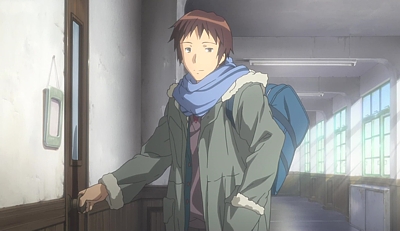
This is where the anime stories end for, as the many dedicated fans of the series know only too well, sadly there will be no third season for The Melancholy of Haruhi Suzumiya. Kyon’s return to the night of the Alteration can be found in a later manga story The Disappearance of Haruhi Suzumiya – Another Day 14, but for now we must leave Kyon the Hero to his future adventures with his eccentric, unaware Goddess and the ‘not-normal’ members of the SOS Brigade.
In closing, it’s comforting to know that for as long as writers, poets and prophets continue to create wonderful tales about the heroic deeds of great Men and Women, Campbell’s Monomyth (a term he borrowed from James Joyce) will remain an integral part of our joint storytelling heritage; and who knows, maybe one day when Kyon is an old man he may decide to tell his own heroic story, perhaps to his grandchildren, although knowing Kyon there will probably be a few imaginative embellishments along the way.
Works Cited
- Plato. Ideas. The Republic, Book III. See: https://plato.stanford.edu/entries/plato-ethics-politics/ Also see: https://en.wikipedia.org/wiki/Theory_of_Forms ↩
- Carl Jung. The Structure and Dynamics of The Psyche. (1960). Pantheon Books. ↩
- Joseph Campbell. The Hero of a Thousand Faces. (1949). Princeton: Princeton University Press. ↩
- Sisyphus. https://en.wikipedia.org/wiki/Sisyphus ↩
- Quote from the character, Sasaki. Manga. The Melancholy of Haruhi Suzumiya Vol.20: The Surprise of Haruhi Suzumiya. Part 15. (2013). Kadokawa Shoten. ↩
- Simon Singh. The Code Book: The Science of Secrecy from Ancient Egypt to Quantum Cryptography. (1999). Doubleday. ↩
- Dan Simmons. Hyperion (1989). Doubleday. ↩
- Tanabata. The tale of Orihime and Hikoboshi. http://www.japan-suite.com/blog/2014/7/6/tanabata-story-of-two-star-crossed-lovers ↩
- Plato. The Republic, Book VII. (360. B.C.E.) The Allegory of The Cave. https://web.stanford.edu/class/ihum40/cave.pdf ↩
- Orpheus and Eurydice. https://en.wikipedia.org/wiki/Orpheus_and_Eurydice ↩
- The Term Mirror Kyon is borrowed (with permission) from Kai Anderson, the creator of: Visual Storytelling- Breaking Down The Disappearance Of Haruhi Suzumiya. This can be found at: https://www.youtube.com/watch?v=qfz_Gg1k1Wc ↩
- Number symbolism within The Melancholy of Haruhi Suzumiya is addressed in a detailed analysis (in preparation), which covers the complete Haruhi saga. ↩
- Quote from the character, Ryouko Asakura. Manga. The Melancholy of Hariuhi Suzumiya Vol.18: The Surprise of Haruhi Suzumiya. Part 2. (2013). Kadokawa Shoten. ↩
- Manga. The Disappearance of Haruhi Suzumiya – Another Day. (2013). Kadokawa Shoten ↩
What do you think? Leave a comment.


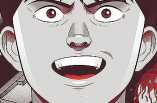
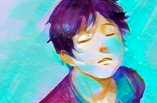
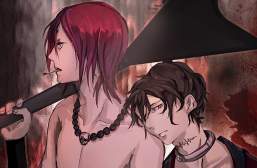
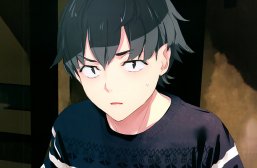
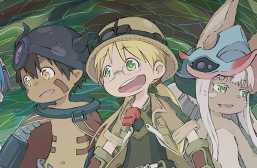
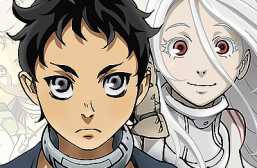
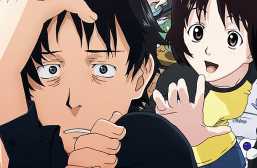
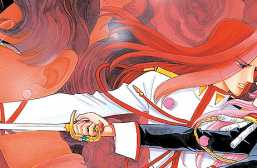
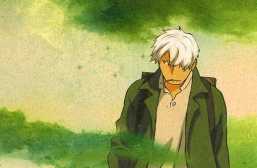
The way you describe characters, and the relationships between characters, and the overall analytical tone is absolutely remarkable. Perhaps this is fanboy bias in me, but I still love the Haruhi anime so much.
Toothfairy, you honour me! Hey, nothing wrong with being a fanboy. I have to admit I have a soft spot for Yuki. There. my secret is out! LOL
Amyus, let me just say you knocked this one right out of the park.
11 years later and it feels like the greater internet anime community see Haruhi as a passing fad whose only merit is the memetastic ED and the basically perfect movie.
So I was happy to find this as something that actually engages with the show as its own thing, with themes and such. Now if only there was an affordable rerelease of the anime, or a new book would come out to continue or finish the series.
Yagami. High praise indeed! Thanks greatly.
Re the greater internet anime community. Fads and fashions come and go and there are those who are always on the lookout for the next big thing. Haruhi has had its critics, but the test of time has shown that Haruhi can still hold up against many recent anime series and films. The ‘Disappearance’ feature film was (and is), in my opinion, still one of the best produced full length anime features I’ve ever seen. I also happen to be one of those fans that appreciated ‘Endless Eight’ (groan if you like) – as it is a scathing dig at Otaku. Still, each to their own, I do have an odd sense of humour.
I’m pleased you enjoyed the article, there is much more to come. I know what you mean about a new book – I finished the last book and thought if Tanigawa doesn’t hurry up and get the next one written soon I’ll write the damned thing myself!
Haruhi Suzumiya is still one of my favorite anime series, and I don’t think it would be an exaggeration for me to say that Disappearance is my favorite anime film of all time. And even though many people can’t stand Endless Eight, I’ve always had an odd sense of respect for it. Especially due to how well it set up the movie. (I still tell anyone interested in the movie to try and force themselves through those eight episodes first since I truly believe the end result is worth it.).
Anyways, before I start rambling too much, I’ll stop here. I just wanted to post a small comment about my own love for the series and the effort you put to write this. 🙂
Freid. Your ‘small comment’ is warmly accepted. Thank you.
I enjoyed Endless Eight. Will I ever watch more than the first and last parts ever again? Hell no. But it had to be done once. A snap decision on the animators’ part or not, it is one of the most powerful storytelling devices I’ve ever seen.
tune. Sorry I missed your comment earlier. Just found it whilst scanning this page again. I think EE was an incredibly brave gamble on the part of KyoAni and it almost paid off. I agree with you that it is a very powerful storytelling device, but in hindsight it was probably an unwise decision to expect a young audience to stick with it to the end. The same story was dealt with rather succinctly with only two episodes in the manga, which (ironically) I thought should have been longer so as to get across the full impact. I think EE is one of those stories that we have to come back to much later to fully appreciate it. I recently introduced a friend to EE and suggested that first time around he watched the first episode, any of the middle eps and then the last, otherwise it can be a little like throwing someone in the deep end of a swimming pool and telling them to tread water for nearly three hours.
Looking back on how Haruhi was really popular is really odd.
I never hear anyone talk about it anymore despite how some shows have managed to stay popular from the same time period .
Bula Whitt. It seems I also missed your comment. Apologies. I wonder, why do you think the popularity of Haruhi was really odd? I’d be interested in your views.
Have a look at reddit – you’ll find there is a very lively forum that still discusses Haruhi (and the various other characters).
Thanks for your reply. I hope I may have re-awoken your interest. 🙂
I enjoyed Kyon’s irritation and melancholy because of Haruhi.
Pierre. Hmmm…’The Irritation of Kyon’, sounds like a good title for a follow on story.
O hope they’ll make a season 3 someday…someday.
Pantoja. Yes that would be great, but it might have to be fan funded. I’d give anything to play Mr Arakawa – I’ve got the moustache!
I feel like the sun has set on Haruhi’s time, as well as it’s relevance. Another season would feel a little misplaced in the current anime landscape, we’ve got more than enough smarmy, self-aware light-novel adaptions to go around now – even if Haruhi was an exceptionally good one.
Liste. Yes, you may well have a point there. Time waits for no one. Perhaps the only way forward for further Haruhi anime would be via fan funding, though the costs of producing a full season would be astronomical. I confess that I haven’t seen many light novel adaptations, but having read the Haruhi novels, I do agree that KyoAni’s adaptation was superb.
The Mediocre at best Nagato spinoff anime (as well as a Haruhi reference in official art for Miss Kobayashi’s Dragon Maid), gives me just a small inkling of hope for a S3 someday. It’s almost like I feel someone wants to keep the franchise alive, but because Tanigawa sucks at publishing consistently, they can’t.
Xuan. Yes I was sorely disappointed the ‘The Disappearance of Nagato Yuki-chan’. Instead of taking the chance and really digging into the Yukiverse (if I can call it that) we were palmed off with a poorly written pastiche that didn’t even merit the term ‘parody’. I watched the first season in the hope that it might develop into something more interesting and when Yuki briefly reverted to her pre-Disappearance character I was intrigued, but that was short lived. In the end I just gave up, as the series was riddled with inconsistencies and forced humour. I felt it was an insult to Tanigawa’s characters. OK, I understand that there are some fans who enjoyed TDONY-C, which is great for them, but I’ve seen similar romantic comedies produced so much better. I won’t be bothering with Season 2.
Doesn’t help that Kyoani sold the license..
Ham. I wasn’t aware that KyoAni has sold the licence. Rather a foolish move, in my opinion. When TDONY-C appeared I did wonder if Tanigawa had sold the rights to his characters – a very bad move on the part of any writer, in my opinion, as you never know who will end up buying them. Anyway, thanks for your feedback and that info. It explains a lot. Cheers 🙂
Great insights, I kept thinking “wow I never thought of that, and I think he might be right”.
Tamar. Thanks for that. Yes, there’s loads more to uncover if you dig deep enough. Mind you, I think the Haruhi tales are open to many interpretations, so that’s what makes them so appealing. I’m planning and in depth look at Yuki, for me the most fascinating character in the whole saga.
typo – an in depth look. Ooops.
I remember the way it actually felt while I was watching it for the first time–it started out fun and then a feeling of nervousness really built up.
Eave. Yes, I liked the way that you could never pin it down. One moment comedy, the next intense drama. A roller-coaster ride for the emotions.
It’s nice to see people who don’t bash Haruhi nowadays.
Shon. Thanks. I wouldn’t dare to bash Haruhi, she’d probably give me a right hook in return or a roundhouse kick. Love her or hate her, she is unique.
Haruhi can make anyone go nuts.
Jade. Amen to that!
I wrote an analytical journal on 5 centimeters per second a couple of weeks ago and was going to delve into this one, but you covered it to an extend where I am satisfied reading it and sharing it to my followers.
Thanks ade. I’m pleased you found this interesting. Will we have a chance to read your analysis of ‘5 Centimeters Per Second’?. I hope so as that’s an excellent film – you can be guaranteed that I’ll read your article.
Thank you everyone for your replies and positive responses. Greatly appreciated. It may be 2017 but Haruhi is still alive and kicking; and no doubt still annoying the hell out of Kyon! On a purely personal note, I still think ‘Disappearance’ is one of the finest anime feature films to date. I would recommend anyone who enjoyed the film to take a look at Kai Anderson’s excellent visual analysis.
A terrific article. I love looking at how Joseph Campbell’s heroes journey applies to narratives from all over the world.
I had never seen Haruhi before, and now I feel like I have. I’m definitely adding this to my to-be-watched pile.
AGMacdonald. Thanks for the feedback. Campbell’s ‘The Hero with a Thousand Faces’ was an eye opener for me and helped me to realise the greater tale behind so many of our favourite stories. The Hero/Heroine never really dies and appears again in a different guise in another classic tale. As part of our joint storytelling heritage this is something we all respond to, albeit subconsciously.
If you’re new to anime in general then Haruhi can seem a little like an anime overload at first and there are times when you’ll quite rightly feel like giving her a kick for being so obnoxious, but she does actually begin to mellow over the series, so by the time we get to the feature film that Haruhi is very different from the one we meet in the early episodes. I’ll gladly welcome anyone new to Haruhi, you won’t be disappointed, just frequently frustrated LOL. As for the feature film – well it’s somewhat darker and more introspective than the madcap sense of the series, but it is beautifully written with superb cinematography and some very inventive editing. Enjoy!
I finally watched this series after putting it off for ages. This final eppy is what sold me. Reading this lengthy article makes me wanna read the light novels!
Kenia. Thanks for the feedback. Re the novels…yes, read them! There is so much more to come in the overall Haruhi storyline, Melancholy and Disappearance were just the beginning.
i cant really get why ppl likes this so much…. I loved ep 11 and 14 they were really good but the rest was serously nothing special or even fun…. As characters i liked Kyon and Asahina but my brain cant comprehend how it is possible for ppl to like Yuki Nagato… I dont say this in a bad way its not that i dont like her is just that she NEVER talks.. how can u like a character that doesnt have much screen time and when she has she doesnt even talk???
Bo Kee. Re Yuki – it’s always the quiet ones you have to watch out for 🙂
I’m a massive fan of the anime, and honestly, I thought your analysis was well-done. I was convinced.
Tarve. Thanks. It’s only my opinion, of course. The tales are open to many interpretations. In fact there is another article at The Artifice that looks at how the Haruhi character can be analysed as a tragic heroine.
Remembered when finish watching it, you really feel that they explain everything without really explaining any of it.
Chun. Yes, I felt the same way. It’s an indication of good writing and an assumption that the audience/viewer can draw their own conclusions. We don’t need to be spoonfed answers. Thanks for your feedback.
I loved season one and the movie. Endless Eight however killed my interest in the series.
Grubb. Fair point. EE was a tough marathon for some and a lot of fans hated it.
This post is magnificent!
Golden. Much appreciated. Thank you.
I loved the analysis, but there are 6 more novels after Disappearance in the original light novel series.
Also season 3 has been shot down because of copyright issues
Stephen. Thanks for the positive feedback. Yes, I’ve read all the novels and the manga as well. Still waiting with baited breath for the next novel, even if only to find out what that Titanium-Caesium bar is for.
Thanks for the info re Season 3. I didn’t know it has even got as far as being planned.
This is an amazingly insightful article. You really know your stuff.
Munjeera. Thanks and much appreciated. Now I’ve just got the finish the longer analysis…getting there. 🙂
A very beautiful anime and story about growing up. Anxieties of being different make it difficult for teenagers to be themselves. We learn about scientific facts and try so hard to be part of an adult world which often means leaving fantasy behind, the little stories we enjoyed, the things we now consider to be too childish to succumb to a boring reality and normality.
Oden. Very insightful observations and I agree with you. I think the beauty of any good and well written story about growing up is that we can revisit it as an adult and still appreciate it.
“Haruhi and Kyon’s school life; and the various crazy adventures of the SOS Brigade, can be seen as a microcosm of the world at large. Inside the small world of North High is witnessed both the intensity and the laziness of teenage life, in which the smallest incidents or misconceptions can be blown out of all proportion by an immature and still developing young mind or summer homework can be left to the very last moment. Naturally teenagers feel everything that much more intensely because they are still learning how to cope with the issues with which adults deal in our everyday lives. Teenagers’ emotions are still raw but that’s because they haven’t yet developed those emotional buffers adults have accumulated over the years. That’s not to say that their feelings and experiences are any less real or valid. But once a teenager develops his or her own philosophy about life in general and learns where they fit into the bigger picture, the world becomes a little less mysterious and, sadly, a little more mundane”.
This analysis is very good and covers the points requested.
Kylie Pike. Thanks for the approval. There are a few parts I’d like to tweak, but that can wait for another time.
Holy cow, going to rewatch this.
Tiffin. Yeah, go for it!
Can anyone HELP me for what order i should watch Haruhi Suzumia?
Mr Karl. I hope this helps…
The original 2006 broadcast order is as follows:
Season 1
‘The Adventures of Mikuru Asahina. Episode 00’,
‘The Melancholy of Haruhi Suzumiya. Parts 1-6’,
‘The Boredom of Haruhi Suzumiya’,
‘Mystérique Sign’,
‘Remote Island Syndrome. Parts 1 and 2’,
‘Live Alive’,
‘The Day of Sagittarius’ and
‘Someday in the Rain’.
Season 2
‘Bamboo Leaf Rhapsody’,
‘Endless Eight. Parts 1-8’ and
‘The Sigh of Haruhi Suzumiya. Parts 1-5’.
This is generally known as the ‘Kyon’ order. The reason for this is that at the end of each episode, Haruhi would number the next episode in its chronological order, whereas Kyon would number the next episode in the broadcast order.
The reordered ‘Haruhi’/chronological order, released in 2009 is as follows:
‘The Melancholy of Haruhi Suzumiya. Parts 1-6’,
‘The Boredom of Haruhi Suzumiya’,
‘Bamboo Leaf Rhapsody’,
‘Mystérique Sign’,
‘Remote Island Syndrome. Parts 1 and 2’,
‘Endless Eight. Parts 1-8’,
‘The Sigh of Haruhi Suzumiya. Parts 1-5’,
‘The Adventures of Mikuru Asahina. Episode 00’,
‘Live Alive’,
‘The Day of Sagittarius’ and
‘Someday in the Rain’.
‘The Disappearance of Haruhi Suzumiya’ feature film follows.
Some fans prefer the original non linear order, others the chronological order. Both work well, but personally I prefer the latter as it leads right up to the ‘Disappearance’ feature film.
Enjoy your viewing. Cheers
I have always personally watched it in chronological order. Here is a great guide:
https://www.reddit.com/r/anime/comments/1w8ggp/wanting_to_watch_the_melancholy_of_haruhi_suzumiya/cezq5xx/
This is beautiful, I love you! My favorite anime. What’s your next article going to be about?!
Pham. Thank you…stop! You’ll make me blush LOL.
This article is actually a shortened extract (rewritten specifically for The Artifice) from a much longer analysis I’m writing about the whole Haruhi saga (presently 180 pages and growing daily). I don’t intend to swamp The Artifice with Haruhi related articles, although there is one I’ve been writing about Yuki Nagato that may be relevant. I’ll just have to see if the editors approve. Other than that I have a couple of articles I’ve written about Korean cinema, but I need to check through the archives here first to ensure I’m not repeating anything already covered elsewhere.
Anyway, thanks again for your positive comments. Much appreciated.
Amyus, can you PLEASE get the Yuki Nagato published? I am even more interested in a comprehensive article on Yuki than Haruhi so I cannot wait to read it. What can I do to make this happen?! 🙂
We can never get enough of studies on Haruhi. Post more!
Pham. I’m working on it 🙂
For me, Yuki is the most fascinating character in the whole saga (less is more) and I am intrigued about a possible connection she may have to the Tanabata Star Festival (no spoilers), so I’ll let you know when I have something ready. Thanks for your support, I really do appreciate it.
Please don’t abandon this article. So looking forward to reading it! Hopefully sooner than later! 😉
Great piece. You’ve utterly sold me on this shows value in a way other articles hadn’t and I’m going to check it out as soon as possible.
eddie. High praise indeed and thank you for that.
I’m sure you’ll enjoy ‘The Melancholy of Haruhi Suzumiya’ series and the Disappearance film, though at times you’ll be annoyed, frustrated and tempted to throw something at Haruhi (as Kyon says in Disappearance – ‘awake or asleep, she’s such a troublemaker’), but then the next moment you’ll be laughing. The series is also littered with almost off-the-cuff literary references that might not seem to have any relevance at the time, but will make sense much later – such as in an early episode Kyon is reading ‘Escape from the School’ (one of Nagaru Tanigawa’s own novels and part of the Gakko O Deyo series) and then later on he actually finds himself trapped in his school alongside Haruhi (re the Shin-jin destroying North High) and unable to escape. Nice touch I thought.
Anyway, that’s enough rambling from me. Welcome to the weird and wonderful world of Haruhi Suzumiya.
…after all Kyon chooses the crazy Haruhi world over the mundane one. Only Kyon has that choice not us.
Case. It’s a tough choice to make, but for all it’s apparent bland simplicity and safety, the altered world was really little more than a gilded cage.
I liked the analysis of Kyon’s inner conflict scene. This is part of what for me makes “Disappearance” one of my top 3 stand alone anime movies. However many times I’ve seen this film and read the book also I still find it enchanting. From the very start with the fall from the bed, to the very end.
It’s crazy but serious and always makes me wonder what I’d do in such a situation.
I loved the series as a whole, and sometimes have hope that they would finish animating the rest of the books.
Anyway thanks for your enlightened essay, it made an interesting read for a drivers rest day
Shiki. Thank you and I’m pleased you liked the article. I hope you has a good rest day 🙂
typo ‘had’ , not has. Oops
The reason why this show “works” for me is Haruhi herself. And I enjoy the shows subtlety. It isn’t my favorite Anime, and it I certainly don’t believe it’s the best Anime ever. But, it is one of the better ones i’ve seen.
Cheek. Yes, Haruhi certainly is unique and in the immortal words of that clown, Taniguchi “I wouldn’t be able to forget her in 50 years!”.
I actually *paid* for the DVDs to watch this show because I heard it was SOOO good. Never payed for anime previously. Superb series!
Patrice. I watched the series first through a certain online streaming site. I’ve only recently got around to watching everything again in English dub and I’ve been surprised at how some of the dialogue varies quite considerably from the original subbed versions.
JUUUST finished watch it and so happy I found this analysis of it. I really love this series, it makes you wonder. It really makes you wonder.
Tiller. As you liked the anime, read the manga or the novels (preferably the latter), there is so much more to come. The journey has only just started.
Very good article! But I wonder then what is the journey of Haruhi. The journey of the unware antagonist? Would not it be interesting to put yourself in Haruhi’s place and see the world as she sees it?
HaruhiJedi. Thanks for the feedback. What is the Journey of Haruhi? Now that is a very good question and one I am attempting to find out for myself. Until Tanigawa completes the saga we can only speculate. As to the rest of your query – well have a go and write about it. I’ll definitely read it 🙂
For those who love subtext this is a cool anime and even better article. Nice ideas about the characters and themes of the Melancholy of Haruhi Suzumiya. Swell!
Elke Dew. Thanks for your comments, very much appreciated. Yes, the Haruhi saga is full of subtext and that’s one of the reasons I thought it worked so well. Youngsters could watch a group of oddball friends having crazy adventures whilst their parents could pick up on the subtext and the deeper levels of storytelling. The Journey of The Hero is just one theme explored in Melancholy, there are so many more.
The Melancholy of Haruhi Suzumiya was already the show that got me the most excited to talk about in conversations with other people, what with its incredibly deep thematic concerns, influential and controversial directing choices, terrific characters, the list goes on…But you with this article have masterfully and succinctly explained so much it is astounding. Writers like you not only reveal the greater genius of a piece of entertainment, but in-so-doing provide us all with insightful new ways and methods of looking at the media we all too often take for granted.
Thank you for writing this, and I can’t wait for your analysis of Yuki (She really is one of the most intriguing characters)
Yanni. Arigatou gozaimasu.
Yuki’s analysis is being written.
There is a lot to discover of this puzzling anime universe, and I’m really glad I still have a long way ahead to actually learn everything. This article helped pave the way and I thank you for that.
nead. Thanks for the enlightened comment. If you get the chance then please do read the novels as well. As I mentioned earlier, ‘Melancholy’ and ‘Disappearance’ are just the beginning of a much longer and convoluted saga that explores many themes. Mind you, I don’t think anyone will ever fully understand Haruhi, at least until Tanigawa allows us to. All we mere mortals can hope is a peek behind the curtain now and then.
I never really “got” this show. I watched it when I was pretty new to anime, and I got the basic appeal of it, of course, but I only ever perceived it as a self-aware comedy series. I only really loved the last episode of the first season. Thanks for writing this article, so that I can now finally understand Haruhi.
I think I’ll finally get around to watching S2 now.
Kendal. Thanks for your comments. I’m still trying to figure out Haruhi myself so if this article helps you in anyway then I’m pleased. She is a riddle wrapped in a mystery inside an enigma.
That. Was. Awesome! Damn, now I want more episodes. New season? 🙁
ooks. Thanks! More episodes? We can but dream….
The ending is one of the best goddamn things I’ve ever seen. This is a clear example on how efficient a good script can be in a story.
Britto. Yes, it’s a great script and so well developed. I once heard someone describe ‘Disappearance’ as the ‘shortest, longest movie I have ever seen’, the two hours and forty minutes flew past.
Lovely post. There are only a few series that can portray such a good atmosphere with such simplicity. It is gorgeous.
Perrin. Agreed. Although I still defer to the original Japanese voice cast, I think the ‘English’ dubbed versions had an excellent voice cast. I also like the way that KyoAni doesn’t just animate the foreground and there’s always something going on in the background. It brings a great sense of depth to a scene.
You, sir, deserve some coffee for this analysis.
McCutcheon. Cheers. Make mine a Kenya AA, black, medium strong and no sugar. 🙂
Praise you for this fair assessment of the show.
Bo Kee. And thank you in return for your praise. Much appreciated.
Anime studies of this quality is very rare. I believe I have only seen it on this publication. Do you have any plans on writing another anime article? I want to write “please do” but don’t want to sound too melodramatic. 🙂
Blossom Jacks. Thank you, your comments are well received and appreciated. Yes, this article is an extract from a much longer analysis so I do intend to delve a lot deeper into the crazy world of Haruhi Suzumiya. There are so many themes explored in the saga, some overlapping each other, some influencing each other and some that appear to be completely disconnected (at first) that it’s taken me a year of reading and rereading the novels, manga and re-watching the anime (taking copious notes as I go) just to nail down some of the more obvious themes. There are so many literary references that I have barely touched on that aspect with this article. I am now working on an article about Yuki.
This was a pretty damn good analysis for one of the best anime series of all time. Bookmarking and sharing this to all my Facebook friends.
Rubye Hostetler. Thank you very much and I hope your FB friends will enjoy this as much as you have. It’s always good for any writer to know their work is appreciated.
The overall responses have been fantastic and far better than I had hoped for. I’m just pleased to have struck a chord with so many Haruhi fans and been able to demonstrate that there is so much to the Haruhi world than appears on the screen.
I have not read a piece on Haruhi and Kyon’s relationship described like this, amazing work! I will definitely reading more of your articles. Thank you for being here!
Kyle. Thank you for appreciating my article. Yes, there will be more to come. 🙂
Thank you for writing this study and I hope that it has encouraged people to try watching The Melancholy of Haruhi Suzumiya.
Nakia Guinn. Thanks for your feedback. I’m always trying to encourage people to give ‘Haruhi’ a go. It may not be that current, in the present anime climate, but it’s still has a lot to offer.
Oh, and by the way – what a great name you have!
Really like your deep analysis.
Daily. Thank you and very much appreciated. There is more to come so, as they say…’watch this space’. 🙂
This was amazing. Made me truly realise the depth of Haruhi.
Chatman. Thank you very much. As with my reply to other comments, there is so much more to discover within the weird and wonderful world of Haruhi. This is just the beginning.
Just letting you know: I started watching this series today. Thanks again for the getting me into this anime.
You’re welcome, AG. Let me know if you spot something I’ve missed. 🙂
I already love the Disappearance of Haruhi Suzumiya, but now I view it on a whole ‘nother level. Amazing article!
jaysongoetzz. Thanks for your comments. Very much appreciated. All writers need feedback (we are such fickle creatures! LOL) and I always welcome constructive criticism. I don’t know whether you’ve read the novels or manga, but if not, please give them a go. There are hints within ‘Disappearance’ (Taniguchi’s comment about his girlfriend) about coming events in later stories. The SOS Brigade is not the only group of ‘not-normals’ with an interest in Kyon!
This is a power article, wow. I read up on the comments. What is the Yuki Nagato article going to be about and when will it be published? Happy to read it when it is out!
Ikanimiko. Thanks for your comments. Feedback is always appreciated. I don’t want to give away any spoilers about the Yuki Nagato article, but it will be more than just a ‘What is Yuki?’ analysis. Naturally there is a crossover with this article about Kyon’s heroic journey. It should be finished by the end of next week, but I have a little more research to do before I’m satisfied. After that, the usual time for an article to be processed at The Artifice is about a month so I hope you don’t mind waiting that long. Thanks for your support.
Do not mind waiting at all. Quality above anything. Thank you for writing!
This is…really good. Sadly a lot of the good Haruhi analysis is hidden in the internet and I stumbled upon this one.
I particularly like your handle on the theme of deism and powers in this article, particularly with Haruhi (and Nagato) as the goddess figures and Kyon as as a figure of Jesus. I think I need a few more read-throughs but my first, immediate question for you is this – how do you deal with Episode V (in the first season) and particularly the point where Itsuki discusses the Anthropic Principle? I’ve heard it cited as evidence for the existence of a deity and also criticized as an example of bad evidence for a deity. I’ve had a lot of conflicting thoughts on it and particularly with respect to whether it supports or harms the “Kyon is God” theory.
I’m using a throwaway but I appreciate this good discussion. Thanks
Yui. Thank you for your praise. I had actually written this article quite some time ago and as you may have noticed from some of the replies I made to other comments, this article is part of a far longer analysis of the whole Haruhi saga (to date). In the longer work I have looked at each character in turn; and not just the brigaders – even Taniguchi, Kunikida and Tsuruya-san are analysed as are the multiple time lines. The reason is to look at all the themes being explored within the overall storytelling and note how they influence each other.
Kyon’s ‘Journey of The Hero’ is just one of them, like a single thread in a tapestry. He isn’t a representation of Jesus, but rather Tanigawa has used that same sacrificial theme found in the story of Jesus (the sacrificial hero and the three day death and resurrection meme predates Christianity by many thousands of years). Campbell, through his work, had identified how many such themes have been repeatedly used throughout our joint storytelling heritage.
Whether or not Haruhi is the ‘true’ unaware deity (and I’m sure you know who I’m alluding to), she definitely possesses deific aspects, as does Nagato, but within the great tapestry each assumes different and sometimes multiple roles. In Kyon’s journey Haruhi represents the catalyst, the heroic prize to be attained and the Sun, but in Haruhi’s journey Kyon represents something else, as he does in Nagato’s journey and Mikuru’s, Koizumi’s etc (sorry, I’m trying not to give away any spoilers). Haruhi’s mistreatment of Mikuru also has an underlying, darker possible meaning. Consider this – what was one of the first things Haruhi did upon her unaware apotheosis? She blocked time travel to the past before that point in time (three years before the events at North High). Think of what happened in 1702 and what Tsuruya-San’s ancestor discovered on the Tsuruya estate. Something that made him feel uneasy so he buried it and it was later rediscovered during the sham Easter chocolate hunt. That something was wisely hidden, by Kyon and Tsuruya, from Haruhi (for obvious reasons), but that meant it was also hidden from Mikuru and the time travellers. Why?
You mention the Anthropic Principle. Yes, here is another example of multiple roles being played out. Koizumi is acting as Guide to Kyon on his heroic journey by explaining the principle and broadening Kyon’s understanding of the universe. He doesn’t give Kyon any answers, he merely suggests lines of thought for Kyon to consider, but Koizumi is also deconstructing Kyon’s reality, verbally probing this potential Kami to see what makes him tick. If Kyon is the true Kami then he is also an unaware one so his heroic journey is also a journey towards reawakening to his true being and Koizumi needs to understand where he fits into that bigger picture, as many of those comments he makes about Haruhi could equally apply to Kyon-Kami.
There is a great deal of circumstantial evidence within Tanigawa’s stories that allude to the possibility of Kyon-Kami, but at the same time when each piece of evidence is analysed, it can also be used to deny the Kyon-Kami hypothesis; as it can also be used to cast doubt on the Haruhi-Kami theory. This is what I love so much about Tanigawa’s writing – he doesn’t give out any pat answers, but carefully crafts his stories so that we can interpret them in almost any way we wish; he encourages his readers to think for themselves. Note how Tanigawa has never satisfactorily explained the connection that Haruhi and Kyon may have to the night of Tanabata, in fact he won’t confirm or deny that they may even be the earthly representations of Orihime and Hikoboshi.
If you’d like to discuss any of this further then feel free to contact me through my profile page. I’m always interested to make contact with thinking Haruhi fans.
Oh and thanks for reading. I always appreciate feedback. Cheers 🙂
One of the best piece on anime I have ever read on The Artifice.
waves. Thank you, your positive feedback is greatly appreciated.
wow amazing, nicely written, I loved it !
farizz. Thanks. There is a new article coming soon, this time looking at Yuki Nagato. It’s still in the tweaking stage and since I’ve been away, involved in other projects, my attention has been required elsewhere. Anyway, thanks once again for the positive feedback.
This was exhausting to read. I feel like I could have gotten this same information just reading a summary of the show’s plot while looking at a diagram of Campbell’s Heroic Journey. This was easily twice as long as it needed to be seeing as there was so little analysis. Anyone can take a story and compare it to the Heroic Journey. I would like to see something interesting rather than something than spend 15 minutes reading something I could discover for myself in 5.
Your opinion has been noted.
The Melancholy is a subversion of a trope: Kyon, the protagonist, is not the alpha or leader, he is not a follower either, this would be Koizumi, but the complement of Haruhi, whose opinions, although not shared, are taken into account by her. She is the alpha of SOS Brigade.
Juan. Thank you for your comments, however, with respect, I think you have missed the point of the article. I didn’t state that Kyon is an ‘alpha’, as you put it. I stated that his heroic journey reflects that outlined by Campbell, so from that point of view, the roles the rest of the characters take do fit into this perspective. Furthermore, what you have expressed is an opinion, presumably based on your interpretation of the overall story arc and, as such, you are welcome to have that opinion. As I’m sure you are aware, there are many different theories and opinions expressed by Haruhi fans, some within the realms of possibility and others somewhat over imaginative in their speculative approaches. I don’t deride anyone’s interpretation. Perhaps you would like to write an article, using your opinion as a starting point. I’m sure there are many Haruhi fans who would be interested to read it.
I have not written that you consider Kyon an alpha, but only show that The Melancholy subverts a trope about how are the protagonists.
E pur si muove
this thread is now closed.
A widely thourough and intriguing article. As the title suggests, Kyon is undergoing a hero’s journey filled with symbolic images and profound allusions.
This is super detailed, nice work! It kinda makes it obvious why this show is so popular, if it contains this much symbolism.